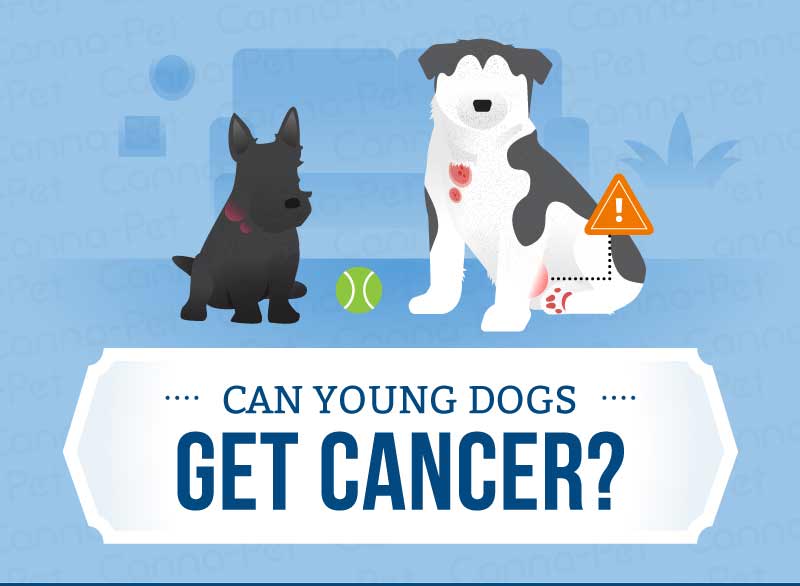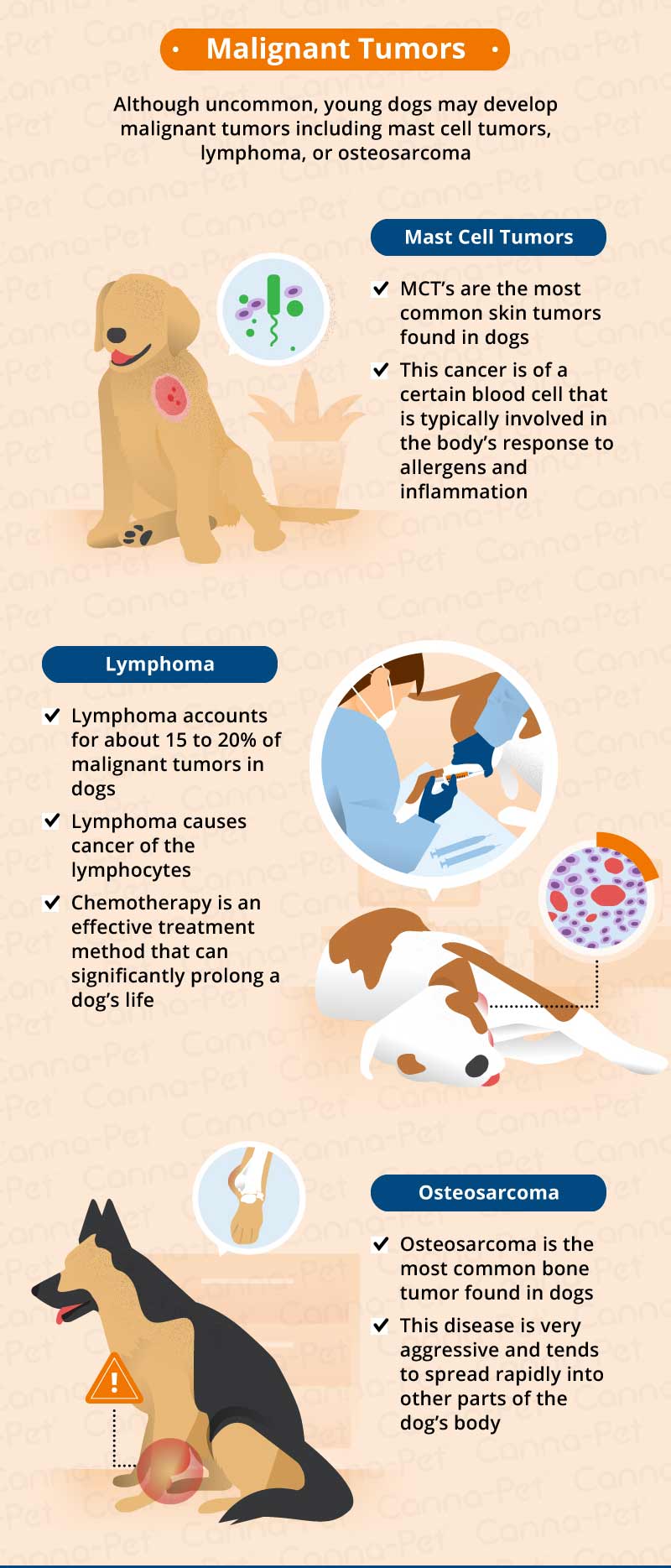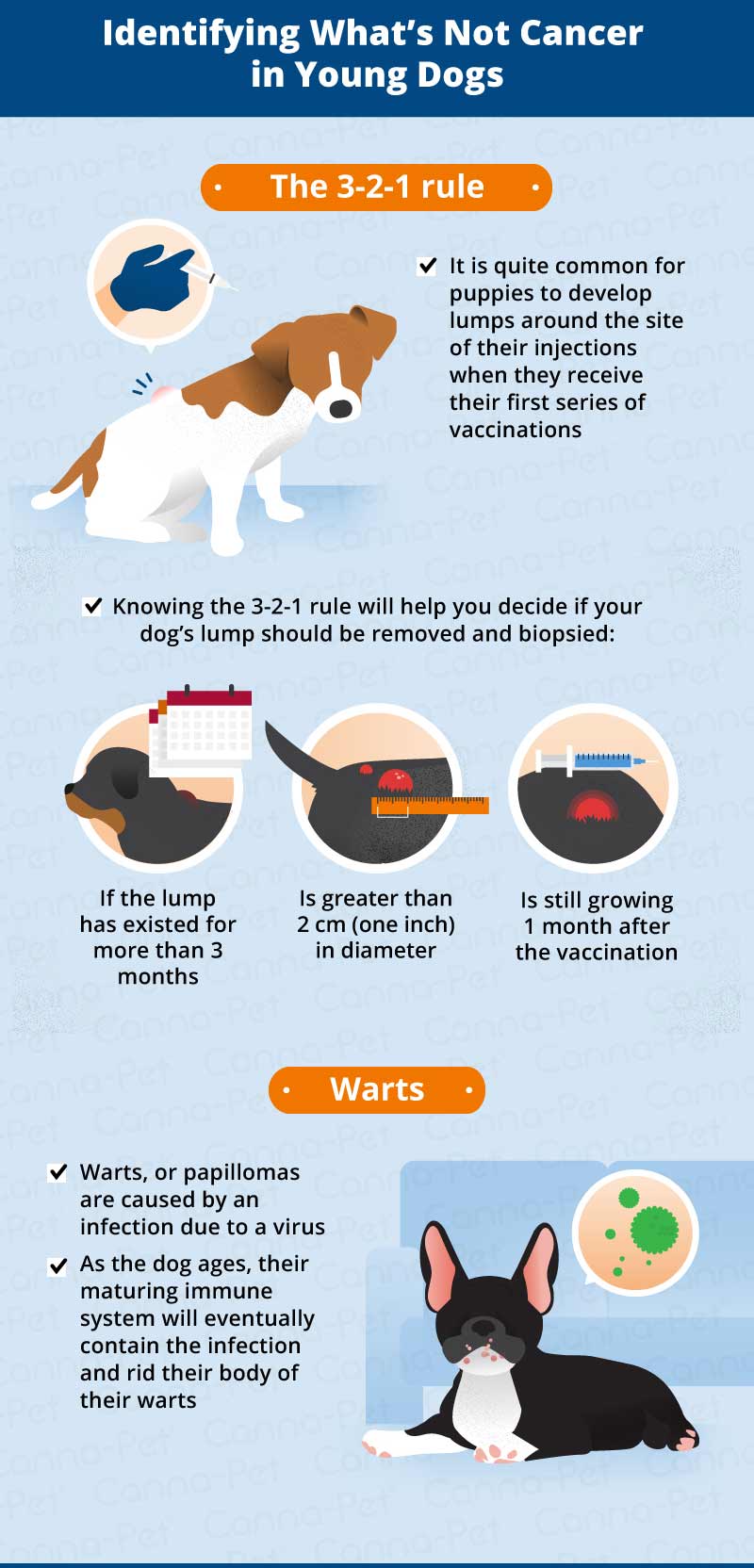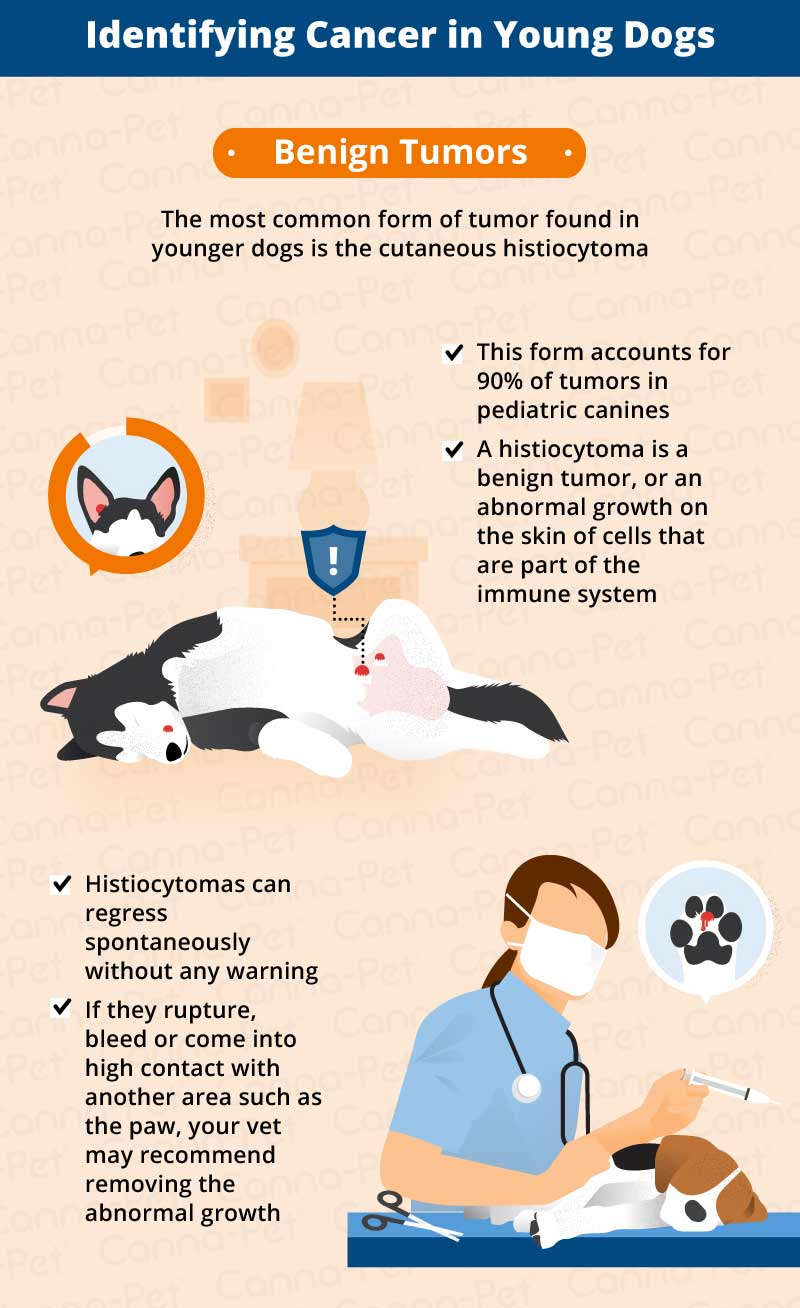If you were to step foot into the waiting room of a veterinary oncology specialist—that is, a veterinarian who specializes in cancer in dogs—you wouldn’t expect a room full of puppies. In fact, research finds that dogs with lymphoma average between six and nine years old.
Unfortunately, like their human counterparts, young dogs can and do get cancer—a revelation which often comes as a shock. No pet owner expects to hear that their puppy, vibrant and full of life, has been diagnosed with a life-threatening disease.

Identifying Cancer in Young Dogs
Benign Tumors
According to a British study, the most common tumor found in a biopsies of younger dogs is the cutaneous histiocytoma, which accounts for nearly 90% of tumors in pediatric canines. A histiocytoma is a benign tumor, or an abnormal growth on the skin of cells that are part of the immune system. They appear as a mass on the skin akin to a raspberry or strawberry.
Being benign, histiocytomas can regress spontaneously. However, if they are ruptured, bleeding, or exposed in a place of high contact such as the paw, your vet may have to remove it surgically.
Malignant Tumors
Though less common, young dogs can still develop malignant tumors including mast cell tumors, lymphoma, and osteosarcoma.
Mast cell tumor (MCT): Mast cell tumor in dogs, are the most common skin tumor, representing a cancer of a certain blood cell typically involved in the body’s response to allergens and inflammation. Mast cell tumors can also affect other parts of the body: the spleen, the liver, the gastrointestinal tract, and bone marrow.
Lymphoma: Accounting for 15 to 20% of malignant tumors in dogs is lymphoma, a cancer of lymphocytes. Chemotherapy has proven successful with this cancer, adding months, even years to a young dog’s life.
Osteosarcoma: The most common bone tumor found in dogs, osteosarcoma can affect any breed but is found most often in larger dogs. This disease is very aggressive and tends to spread rapidly into other parts of the dog’s body. There is no known prevention of this disease today, and though treatment options are available, the general prognosis is poor.


Identifying What’s Not Cancer in Young Dogs
The 3-2-1 Rule
When puppies receive their first series of vaccinations, lumps can form at the site of injection. This occurs when the immune system goes on the defense by sending a collection of immune cells to the injection site. Normally, a lump of this sort will dissipate in a week or more.
Stay alert with the 3-2-1 rule, which states that the lump should be removed and biopsied:
- If the lump has existed for more than 3 months
- Is greater than 2 cm (one inch) in diameter, or
- Is still growing 1 month after the vaccination
Sometimes these lumps become malignant, so early detection and removal is key.
Warts
Warts, or papillomas, are not malignant, but their resemblance to small cauliflower tumors on the skin are reason enough for concern. Papillomas are caused by an infection from a virus, and can become so severe that they attack in droves around the mouth or face of an infected dog.
Despite their looming presence, your dog’s maturing immune system will eventually contain the infection and ward off the warts without a visit to the vet.

How to Approach Cancer in Young Dogs
Step One: Confirm the Cancer
If you suspect your young dog has cancer, see your vet for confirmation. Not only will you gain a better understanding of the disease, but your vet can also point you to guides or groups for support.
Now is the time to read up on the cancer and possible treatments so you can feel ready to take it on alongside your best friend.
Step Two: Manage Your Emotions
Your dog will look to you for cues on how to react and behave, so managing the disease with a clear mind is key. Whether it’s a support group, reading material, or a second opinion you seek, getting ready and in a clear state of mind will only help you and your pup in the long run.
Step Three: Prepare a Treatment Plan
Analyzing a plan of treatment is the next step. Your vet will go over a variety of treatments with you to extend your dog’s quality of life. Many vets will opt for aggressive treatments at this stage as cancer in young dogs can be aggressive, itself.
Finding out your young dog has cancer is never easy. With the proper plan and understanding, your pup has a much better chance at an extended, quality life.






